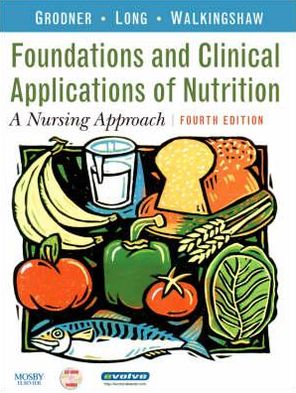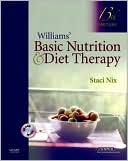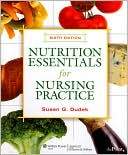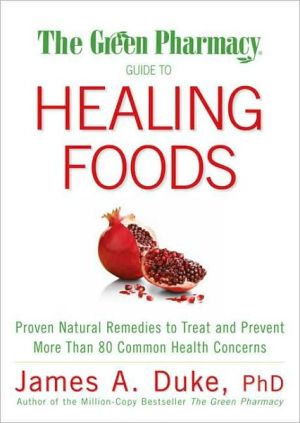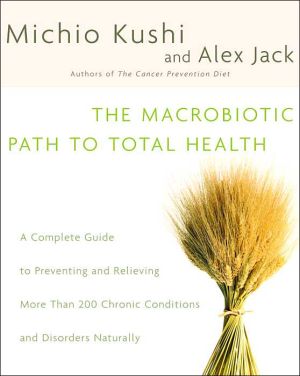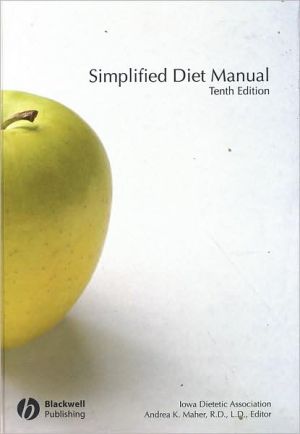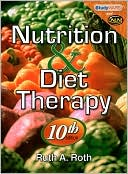Foundations and Clinical Applications of Nutrition: A Nursing Approach
Foundations and Clinical Applications of Nutrition: A Nursing Approach emphasizes the role of nutrition in health promotion, primary prevention, and clinical disease states, with an in-depth analysis of the USDA's Dietary Guidelines for Americans 2005 and MyPyramid Food Guidance System. The dynamic author team utilizes a conversational writing style and a variety of learning features to apply information to the clinical setting.\ • The Nursing Approach case studies in each chapter reinforce...
Search in google:
FOUNDATIONS AND CLINICAL APPLICATIONS OF NUTRITION: A NURSING APPROACH, second edition, approaches the study of nutrition and diet therapy from the personal and professional perspective of nursing students. The text emphasizes the role of nursing in health promotion and primary prevention as well as in illness. Includes life-span coverage, nursing process and cultural considerations throughout in a full-color design. The second edition includes expanded content on allergies, complementary therapies, and telenursing.(Includes FREE Nutritrac CD-ROM, biannual nutrition newsletter, and MERLIN website at:www.harcourthealth.com/MERLIN/Grodner/) Mary Ann Wehmer This new book on foundations and clinical applicationof nutrition contains a solid base of dietary knowledge presentedwithin the nursing process. Physical and psychological dimensions ofsuccessful nutritional strategies are presented for nurses to utilizepersonally with themselves and their family as well as professionallywith patients receiving institutional care and with clients incommunity settings. The purpose is to provide basic nutritionalknowledge so that promotion of enhanced nutritional lifestyles can beunderstood and supported. The book is targeted for nursing studentsand nurses who are studying medical nutritional therapy and healthydietary habits; but secondary audiences that can benefit include healthcare professionals and students in a wide array of deliverysettings. Continual application of the nursing process is tied into aframework that provides holistic patient care to achieve and maintainwellness and Healthy People 2000 nutritional priorities. Some of thevaluable features include current dietary recommendations and foodlabeling requirements; age-related, body fat composition, and specificdisease process variations; multicultural, social, and controversialhealth issues; integrated food guide pyramid; and patient educationtools. This nutritional reference is an excellent tool for nursingstudents and nurses who interact with patients and clients on food andnutrition issues. The writing style is very effective in presentingserious topics in a clear style that makes studying nutrition rewardingand interesting. The appendix includes many valuable resources ofinformation, such as an extensive food composition table; food exchangelists and information on planningindividualized diets using theexchange list; comparison of weight-loss programs; and a current sourceof nutrition organization.
1Wellness Nutrition42Personal and Community Nutrition263Digestion, Absorption, and Metabolism564Carbohydrates765Fats1026Protein1267Vitamins1508Water and Minerals1789Energy Supply and Fitness21210Management of Body Fat Levels24011Life Span Health Promotion: Pregnancy, Lactation, and Infancy27412Life Span Health Promotion: Childhood, Adolescence, and Adulthood30213Nutrition in Patient Care34014The Care Process: Nutrition Intervention36215Enteral and Parenteral Nutrition38016Nutrition for Disorders of the Gastrointestinal Tract41017Nutrition for Disorders of the Liver, Gallbladder, and Pancreas43618Nutrition for Diabetes Mellitus45619Nutrition for Cardiovascular Diseases48020Nutrition for Diseases of the Kidneys50221Nutrition in Cancer, AIDS, and Other Special Problems520
\ Mary Ann WehmerThis new book on foundations and clinical applicationof nutrition contains a solid base of dietary knowledge presentedwithin the nursing process. Physical and psychological dimensions ofsuccessful nutritional strategies are presented for nurses to utilizepersonally with themselves and their family as well as professionallywith patients receiving institutional care and with clients incommunity settings. The purpose is to provide basic nutritionalknowledge so that promotion of enhanced nutritional lifestyles can beunderstood and supported. The book is targeted for nursing studentsand nurses who are studying medical nutritional therapy and healthydietary habits; but secondary audiences that can benefit include healthcare professionals and students in a wide array of deliverysettings. Continual application of the nursing process is tied into aframework that provides holistic patient care to achieve and maintainwellness and Healthy People 2000 nutritional priorities. Some of thevaluable features include current dietary recommendations and foodlabeling requirements; age-related, body fat composition, and specificdisease process variations; multicultural, social, and controversialhealth issues; integrated food guide pyramid; and patient educationtools. This nutritional reference is an excellent tool for nursingstudents and nurses who interact with patients and clients on food andnutrition issues. The writing style is very effective in presentingserious topics in a clear style that makes studying nutrition rewardingand interesting. The appendix includes many valuable resources ofinformation, such as an extensive food composition table; food exchangelists and information on planningindividualized diets using theexchange list; comparison of weight-loss programs; and a current sourceof nutrition organization.\ \ \ \ \ BooknewsA text for nursing students in nutrition and medical nutrition therapy, and students in health education and health science. Sections on wellness, nutrition, and the nursing role; nutrients, food, and health; health promotion through nutrition and nursing practice; and an overview of diet therapy emphasize the nursing role, lifespan wellness, and cultural awareness, and feature boxes on social issues, patient education, common myths, and clinical applications. Includes color diagrams and photos, showing only women as nurses. Annotation c. Book News, Inc., Portland, OR (booknews.com)\ \ \ From The CriticsReviewer: Mary Ann Wehmer, RN, MSN, CNOR(University of Southern Indiana)\ Description: This new book on foundations and clinical application of nutrition contains a solid base of dietary knowledge presented within the nursing process. Physical and psychological dimensions of successful nutritional strategies are presented for nurses to utilize personally with themselves and their family as well as professionally with patients receiving institutional care and with clients in community settings.\ Purpose: The purpose is to provide basic nutritional knowledge so that promotion of enhanced nutritional lifestyles can be understood and supported.\ Audience: The book is targeted for nursing students and nurses who are studying medical nutritional therapy and healthy dietary habits; but secondary audiences that can benefit include health care professionals and students in a wide array of delivery settings.\ Features: Continual application of the nursing process is tied into a framework that provides holistic patient care to achieve and maintain wellness and Healthy People 2000 nutritional priorities. Some of the valuable features include current dietary recommendations and food labeling requirements; age-related, body fat composition, and specific disease process variations; multicultural, social, and controversial health issues; integrated food guide pyramid; and patient education tools.\ Assessment: This nutritional reference is an excellent tool for nursing students and nurses who interact with patients and clients on food and nutrition issues. The writing style is very effective in presenting serious topics in a clear style that makes studying nutrition rewarding and interesting. The appendix includes many valuable resources of information, such as an extensive food composition table; food exchange lists and information on planning individualized diets using the exchange list; comparison of weight-loss programs; and a current source of nutrition organization.\ \ \ \ \ 4 Stars! from Doody\ \
